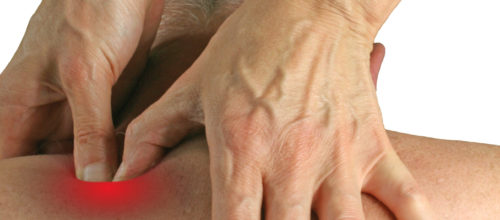
Issues in Our Tissues: Trigger Points and Adhesions
One of the most common causes of pain in the body can be a problem with muscle and/or connective tissue (fascia). Most of us have experienced what we call a muscle “knot” at some point in our lives. The clinical term for this is a myofascial trigger point. Of course, there isn’t actually a knot tied up inside our muscle, but it tends to feel firm/hard and can be tender.
All of the muscle and connective tissue in our body is made up of bundles and networks of fibrous material. The fibers in muscle are arranged in a particular order and aligned to ensure proper function. Sometimes a section of those fibers can become irritated. When this happens, some of the fibers in the muscle may begin to contract involuntarily and remain in a state of tension, causing a trigger point.
Sometimes a trigger point may actually cause pain to radiate away from the source to a nearby area in the body. These are known as active trigger points and are often a hidden cause of common pains. In the clinic we see this frequently manifesting as headaches, jaw pain, and pain into an arm or leg.
The fibers in connective tissue differ from those in muscles and can sometime become intertwined or overdeveloped, creating a thickening of tissue in a given area leading to tension in and around a muscle, joint, or organ. These thickened areas of tissue are often referred to as adhesions. Similar to a myofascial trigger point, an adhesion can cause pain, tension and restricted mobility.
5. Repetitive stress/strain
6. Ultrasound
Continue to practice proper posture and stress reduction in order to prevent these issues, but if they occur there are solutions. Please reach out to our staff with any questions!
*Safety note – Acupuncture and dry needling should only be performed by a licensed acupuncturist or medical doctor
Sources:
